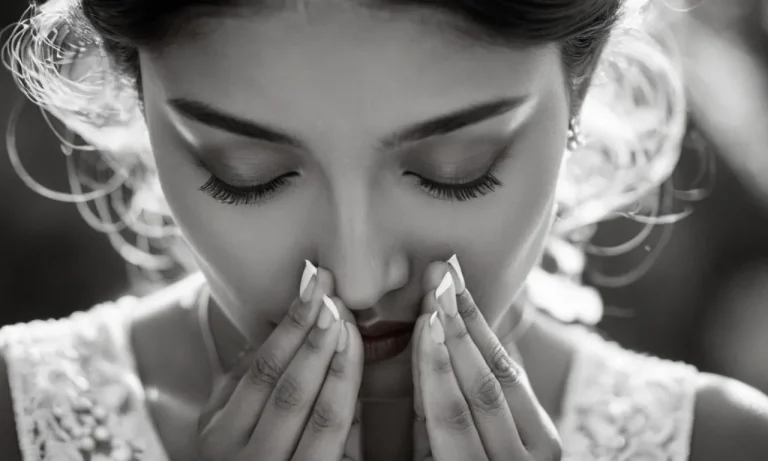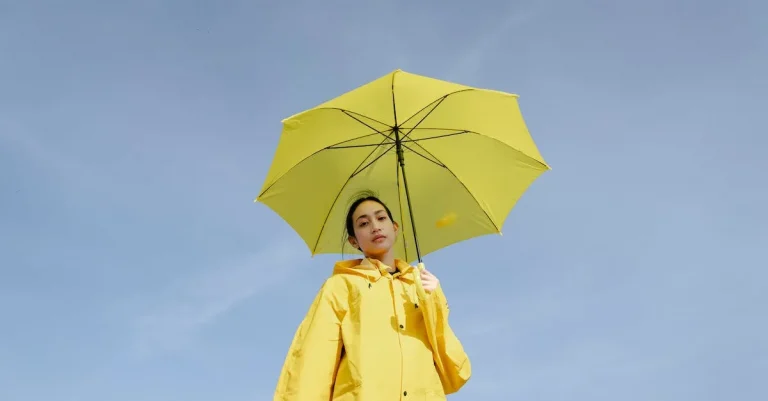Rainbows have fascinated humankind since the beginning of history. Their stunning displays of color and light have inspired awe, hope, and intrigue across cultures and eras. If you’ve ever gazed up at a rainbow yourself, you’ve likely felt a sense of wonder and positivity wash over you. But is there more to these meteorological marvels than meets the eye? In many spiritual traditions, customs, mythologies, and teachings throughout the ages, the rainbow has held deep significance as a powerful symbol. Read on to explore the mystical meanings, metaphors, and messages behind the rainbow.
If you’re short on time, here’s a quick answer to your question: Rainbows are commonly seen as symbols of transformation, liminality, hope, prosperity, good fortune, spirituality, and more in various cultures and belief systems throughout history. They represent bridges between worlds, states, or dimensions in many traditions.
Ancient Meanings and Mythology
Rainbows in Ancient Near East and Greek Mythology
Rainbows have held great significance in ancient cultures throughout history. In the ancient Near East, rainbows were often associated with divine messages and acts of gods. In Mesopotamian mythology, the rainbow was seen as a bridge between heaven and earth, connecting mortals to the divine realm. In Greek mythology, Iris, the goddess of the rainbow, was believed to be the messenger of the gods, carrying messages between heaven and earth. The presence of a rainbow was seen as a sign of good fortune and a blessing from the gods.
Rainbow Symbolism in Norse Mythology
In Norse mythology, rainbows were associated with the Bifröst, a burning rainbow bridge that connected Asgard, the realm of the gods, to Midgard, the realm of humans. The Bifröst was believed to be guarded by the god Heimdall, who would blow his horn to announce the arrival of the gods. The rainbow bridge was seen as a symbol of a connection between different realms and a gateway to the divine. It represented the link between the mortal world and the spiritual realm.
The Rainbow Serpent in Australian Aboriginal Traditions
In Australian Aboriginal traditions, the Rainbow Serpent is a powerful creator being and a central figure in Dreamtime stories. The Rainbow Serpent is believed to have created the rivers and waterways, and its movement across the land is said to create rainbows. It is seen as a symbol of fertility, renewal, and the cycle of life. The Rainbow Serpent is considered a protector of the land and its people, and its presence is seen as a sign of spiritual power and connection to the Dreaming.
For more information on ancient mythologies and their symbolism, you can visit https://www.ancient.eu/mythology/ and https://www.greekmythology.com/.
Rainbows in Major World Religions
Judeo-Christian Traditions
In Judeo-Christian traditions, rainbows hold significant spiritual meaning and symbolize hope, promise, and divine presence. The story of Noah’s Ark in the Bible’s Book of Genesis features a rainbow as a sign of God’s covenant with humanity never to flood the earth again. This colorful arc in the sky represents God’s love and protection. It serves as a reminder that even in the midst of chaos and destruction, there is always the possibility of new beginnings and restoration.
According to Jewish mystical tradition, the rainbow is associated with the divine throne of God. It is believed to be a bridge connecting heaven and earth, symbolizing the connection between the physical and spiritual realms. This interpretation highlights the divine presence that can be felt and experienced through the beauty and awe-inspiring nature of rainbows.
Hinduism and Buddhism
In Hinduism and Buddhism, rainbows are also regarded as significant spiritual symbols. In Hindu mythology, the rainbow is associated with Indra, the king of gods and ruler of the heavens. It is believed that Indra uses the rainbow as a divine weapon to defeat demons and protect the gods and humans from harm. The rainbow is seen as a powerful symbol of divine protection and victory over evil.
In Buddhism, rainbows are considered auspicious and are associated with the concept of enlightenment. In Tibetan Buddhism, it is believed that the rainbow body is the highest state of spiritual attainment, where a practitioner has dissolved their physical body into pure light. The rainbow serves as a metaphor for the transformation of the ordinary human state into the enlightened state of being.
Islam
In Islam, rainbows are seen as signs of mercy and blessings from Allah. According to Islamic tradition, Prophet Muhammad once pointed towards a rainbow and said, “My Lord (Allah) says: ‘Whenever I make a promise, I fulfill it.” This statement emphasizes the belief that rainbows are a manifestation of Allah’s faithfulness to His promises and His abundant blessings upon humanity.
Moreover, rainbows hold a special significance during Islamic holidays, such as Eid al-Fitr and Eid al-Adha. Muslims view rainbows as a symbol of the beauty and harmony of Allah’s creation and a reminder to be grateful for the blessings bestowed upon them.
The spiritual meaning and symbolism of rainbows vary across different cultures and religions, but they all share the common theme of hope, divine presence, and blessings. Rainbows serve as powerful reminders of the interconnectedness between the physical and spiritual realms, and the potential for transformation and renewal even in the face of adversity.
Rainbow Flags and Their Symbolism
The Rainbow Flag in LGBTQ+ Pride
The rainbow flag has become a powerful symbol for the LGBTQ+ community and is widely recognized as a symbol of pride and inclusivity. The flag was first created by artist and gay rights activist Gilbert Baker in 1978. Each color of the flag holds its own significance, with each stripe representing a different aspect of the LGBTQ+ community. The original flag had eight colors, including hot pink and turquoise, but it has since been reduced to six colors: red, orange, yellow, green, blue, and violet. The flag has been embraced by LGBTQ+ individuals and allies worldwide, serving as a symbol of unity, visibility, and the fight for equality.
Rainbow Flags for Peace
Rainbow flags are not only associated with LGBTQ+ pride but also have been used to represent peace and diversity in various contexts around the world. The use of rainbow flags as a symbol of peace and harmony dates back to the 1960s when the “Peace Flag” was created by American artist and activist, Albert M. Fine. The flag consisted of seven horizontal stripes, with each stripe representing a different aspect of peace. Since then, rainbow flags have been raised at peace rallies, marches, and events to symbolize the desire for a more inclusive and peaceful world.
Today, rainbow flags continue to be flown during LGBTQ+ pride celebrations and peace movements. They serve as a reminder of the ongoing struggle for equality and acceptance for all individuals, regardless of their sexual orientation or gender identity. The symbolism of the rainbow flag extends beyond its vibrant colors, representing hope, solidarity, and the belief in a better and more inclusive future.
Psychology and Spiritual Interpretations of Rainbows
Rainbows have long been regarded as powerful symbols in various cultures and spiritual traditions. Beyond their physical beauty, rainbows hold deep psychological and spiritual meanings that resonate with people across different beliefs and backgrounds.
Rainbows as Symbols of Hope and Optimism
One of the most common interpretations of rainbows is that they symbolize hope and optimism. When we see a rainbow after a storm, it serves as a reminder that even in the darkest of times, there is always light and beauty that can emerge. Rainbows can inspire us to stay positive and keep moving forward, no matter how challenging our circumstances may be.
Psychologically, the sight of a rainbow can trigger feelings of joy, wonder, and hope. It can lift our spirits and remind us that there is always a silver lining, even in the midst of adversity. The vibrant colors of a rainbow can evoke a sense of awe and wonder, reminding us of the beauty and diversity of life.
Bridges Between Worlds and Transitions
In many cultures, rainbows are seen as bridges between different worlds or realms. They are often associated with transitions, such as the crossing from one stage of life to another or the passage between the earthly and spiritual realms. This symbolism suggests that rainbows can serve as guides or markers during times of change and transformation.
Just as a rainbow connects the sky and the earth, it can symbolize the connection between the physical and spiritual dimensions. It reminds us that there is a greater, unseen reality beyond what we can perceive with our senses. Rainbows can be seen as invitations to explore and embrace the mysteries of life.
Rainbows in New Age and Spiritual Movements
Rainbows have gained significant popularity in New Age and spiritual movements. They are often associated with concepts such as energy healing, chakra systems, and the balance of light and dark energies. Some spiritual practitioners believe that each color of the rainbow corresponds to a specific energy or vibration that can be used for healing and spiritual growth.
In these movements, rainbows are seen as powerful symbols of spiritual awakening and enlightenment. They are believed to represent the integration of different aspects of ourselves and the harmonious blending of our spiritual and earthly nature. Rainbows can inspire us to explore our inner realms and seek a deeper connection with our true selves and the universe.
It is important to note that the interpretations and meanings of rainbows can vary greatly depending on cultural and individual beliefs. While some may view rainbows as purely natural phenomena, others see them as profound spiritual symbols. Regardless of our personal interpretations, rainbows continue to captivate and inspire us with their beauty and symbolism.
Cultural Representations and Influences
Rainbows in Art and Literature
Rainbows have long been a source of inspiration for artists and writers around the world. In art, rainbows are often depicted as a symbol of hope, beauty, and harmony. They are often used to represent the bridge between heaven and earth, as well as a connection between different realms. One famous example is the painting “The Great Wave off Kanagawa” by Hokusai, which features a vibrant rainbow in the background, adding depth and symbolism to the artwork. In literature, rainbows are often used as a metaphor for transformation and personal growth. For example, in the novel “The Alchemist” by Paulo Coelho, the protagonist embarks on a journey to find his personal legend, and a recurring symbol throughout the book is the image of a rainbow, representing the fulfillment of his true purpose.
Rainbow Themes in Pop Culture
Rainbows have also made their way into popular culture, becoming a recognizable symbol in various forms of media. From movies to music, rainbows are often used to evoke a sense of joy, positivity, and inclusivity. In the iconic film “The Wizard of Oz,” the main character Dorothy follows the yellow brick road to reach the Emerald City, and along the way, she encounters a vibrant rainbow. This rainbow serves as a symbol of hope and guides her towards her ultimate goal. In the music industry, the rainbow flag has become a powerful symbol of the LGBTQ+ community, representing diversity, pride, and equality. The flag was first designed by Gilbert Baker in 1978, and it has since become an international symbol of LGBTQ+ rights and acceptance.
Conclusion
Throughout history and across civilizations, the rainbow has remained a constant source of inspiration, imagination, and faith. Their brilliance, liminality, and mystery have imbued them with rich symbolic significance in mythology, religion, spirituality, art, activism, psychology, and culture. While their meanings may vary, rainbows continue to fill humanity with a sense of awe, joy, and promise. Their beauty and rarity remind us to appreciate life’s gifts, have hope in times of trouble, and celebrate our shared humanity. Whenever you’re blessed to see a rainbow’s colors arc across the sky, take a moment to reflect on its deeper significance and let its magic fill you with peace, inspiration and renewed faith.






